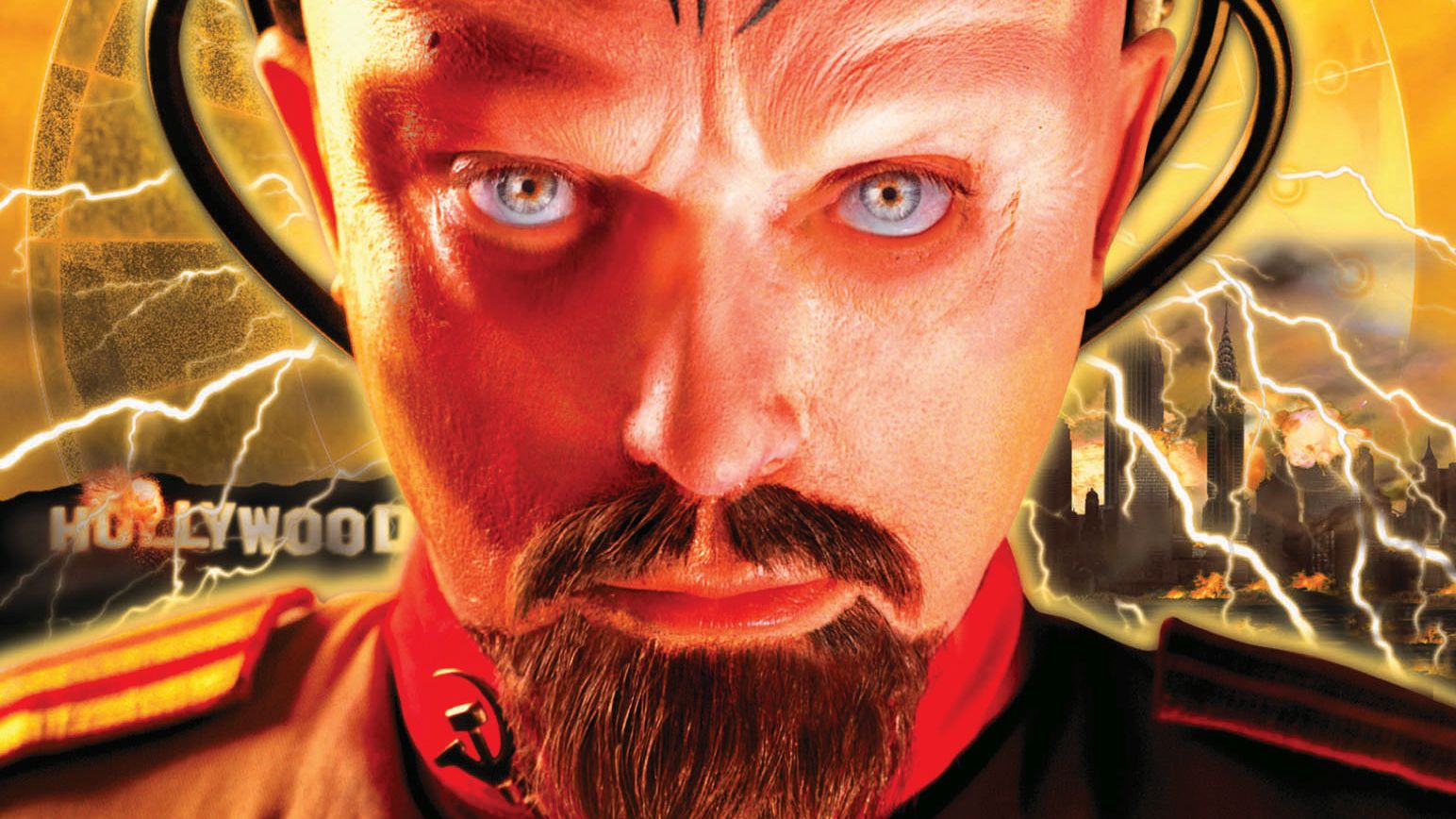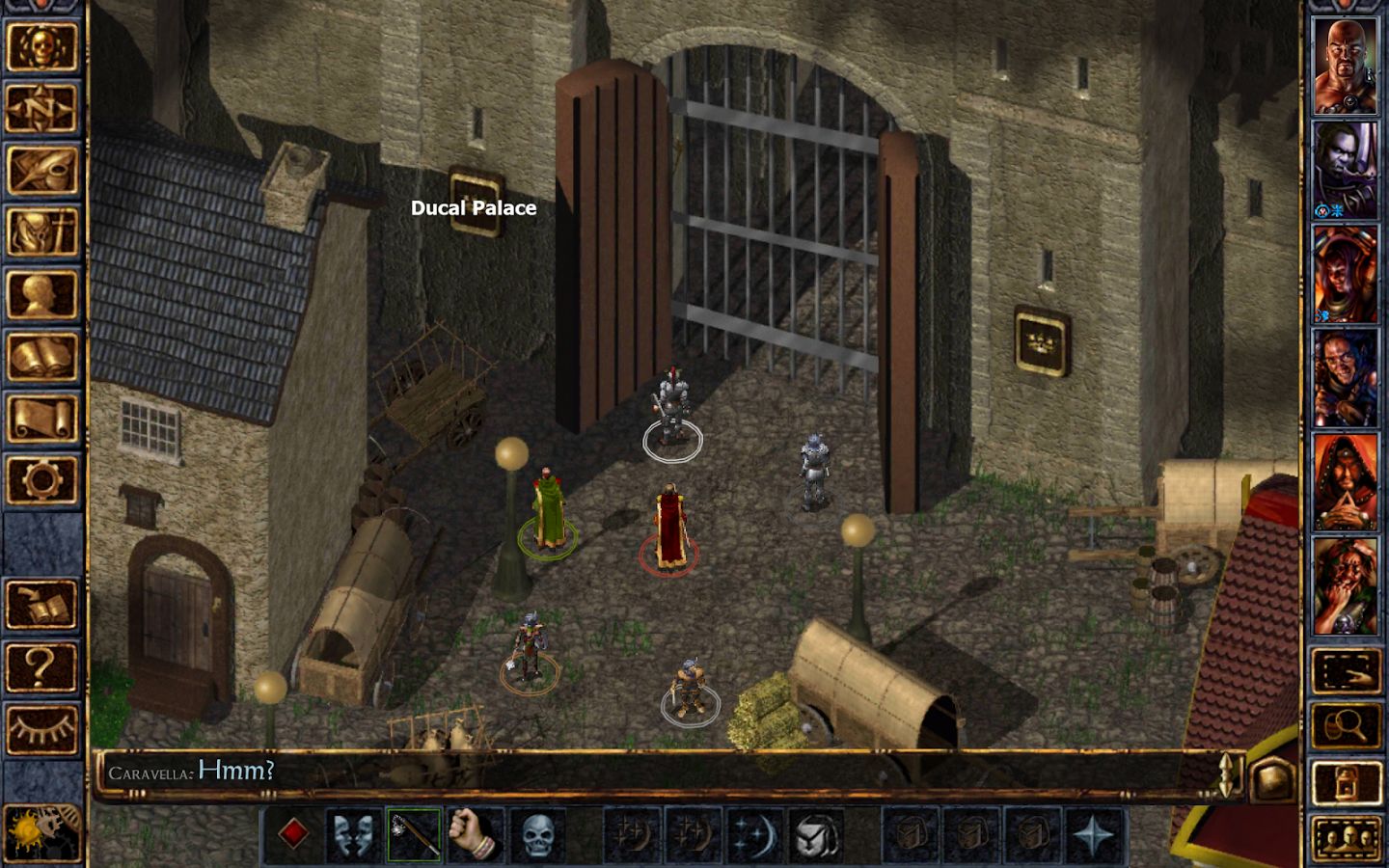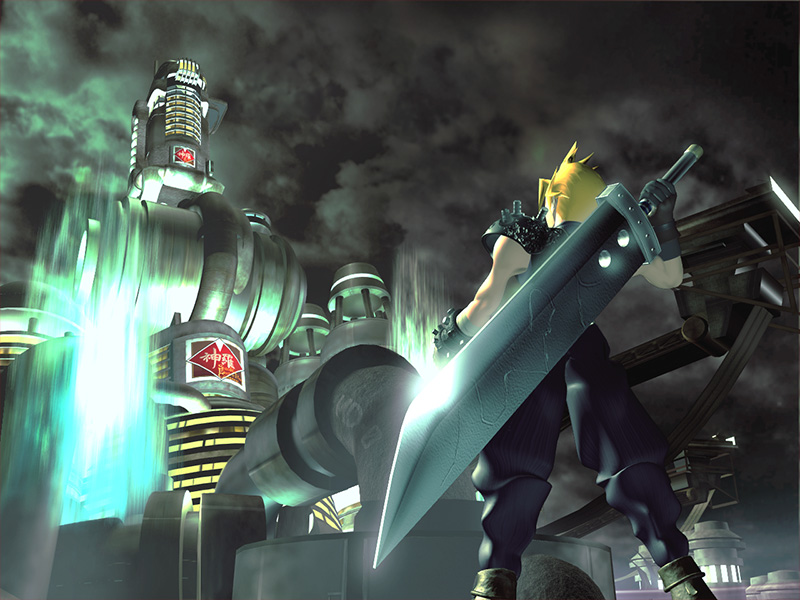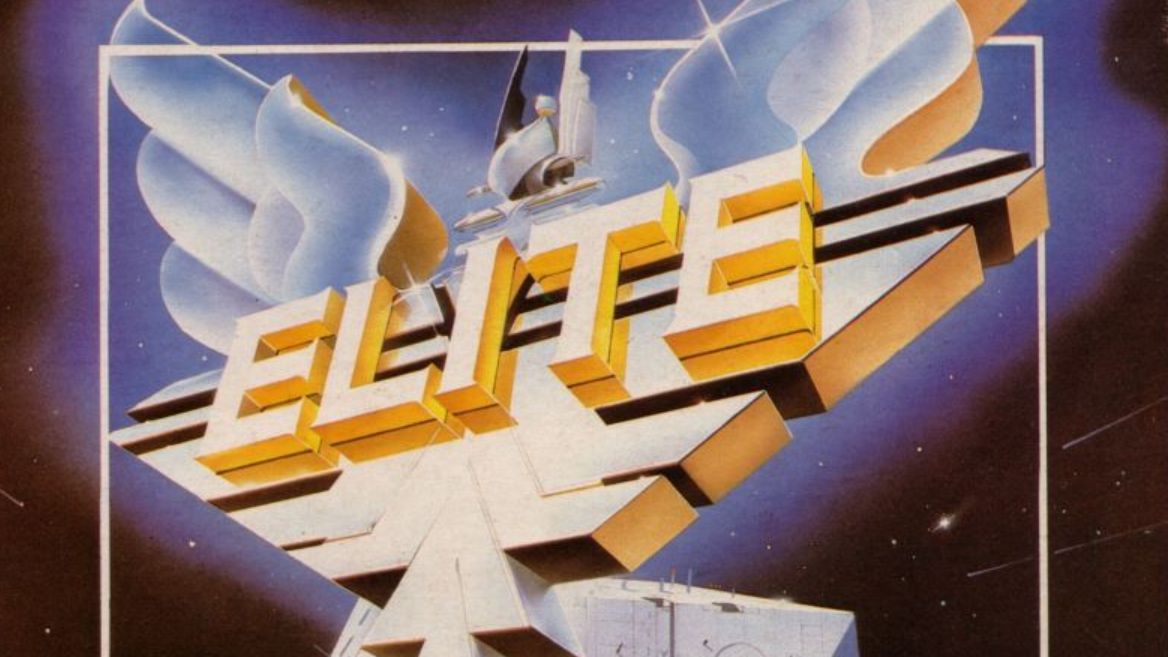
Every weekend, the PCG Q&A asks our team a question about PC gaming. Past editions include:
- Do FPS games still need a singleplayer campaign?
- Which game is just too damn long?
- What's the most disappointed you've been by a game's ending?
The first weekly PCG Q&A asked the PC Gamer team to reminisce about the first PC games we ever played, but what were the first games that really hooked us? Which games did we obsess over so much the soundtracks turn up in our dreams? Which games were so good we decided to make a whole career out of writing about them?
Once you open the nostalgia box there's no going back, which means that almost all of us jumped in to answer this one. The precise question: What's the first game you really loved? Let us know your first gaming love in the comments.
Andy Kelly: Baldur's Gate
I grew up playing console games, but when a beige behemoth of a Pentium II PC arrived at my house one day after school, I never looked back. Short on money, I used to go to a games shop in Glasgow city centre and swap, rather than buy, games. For a few quid you could hand over an old game and grab another, as long as it was of a similar quality. And while I don't remember what I swapped for it, I do remember picking Baldur's Gate up off the shelf on a whim, reading that fat manual on the bus home, and getting enormously excited about adventuring on the Sword Coast.
Baldur's Gate was my first taste of a proper RPG. I'd played (and loved) a lot of JRPGs on my PlayStation, but this was on a whole other level. It was rich and deep and wordy. There was loads of brilliant dialogue, choices with actual consequences, and a liberating sense of freedom. I fell in love with the D&D setting, the characters, and the customisation, and I still love CRPGs to this day. It's great to see the likes of Pillars of Eternity and Tides of Numenera carrying the torch all these years later, and a resurgence of love for the genre.
Wes Fenlon: Prince of Persia
Prince of Persia enchanted me in that way a videogame can only completely do when you're young. I hadn't played other platformers, come to understand the common language of games—trap floors, hidden paths, levels as discrete challenges. Those dungeons felt so real, and so did the Prince's rotoscoped, athletic movements as he ran and jumped and tip-toed through spikes and deadly chomping blades. I was always so terrified of those blades, so excited when I'd work my way up and out of the dungeon, racing against the clock, and reach the carpeted halls of the tower's lower floors. The shadow prince, who split off from you when you jumped through a magic mirror, was a fascinating mystery I never solved, because I was too young and unskilled to reach the top of the tower and face Jaffar within the hour time limit.
But I must've played the first half of Prince of Persia a hundred times. It so deftlessly communicated that feeling of adventure and mystery I'd later love in Raiders of the Lost Ark. I remember being so into the game, I even set our Windows 3.1 PC's wallpaper to a tiled wallpaper with columns and an archway that looked similar to the Arabian palace, at least to my young brain. I found it. It's called Arches.bmp. That was a good wallpaper, but Prince of Persia was a masterpiece.
Chris Livingston: Swordthrust
Gosh, how far back can we go? The earliest game I remember really loving was Swordthrust, a text adventure RPG with dice-roll combat for the Apple II back in 1981. I'd been playing lots of D&D with my friends at the time and this was like singleplayer D&D on the computer, which was exciting because it meant you could play D&D even when all your friends weren't around so you would never, ever have to go outside ever again. It was a little offbeat: when entering a room, you could use a 'smile' command to see if people or creatures in the room were hostile based on whether or not they smiled back. (Frankly, all games should let you do this—imagine smiling at a Doom demon or Skyrim giant.) There were odd little anachronistic jokes, like I remember a long corridor with Burma-Shave style signs (Google it) you could read as you moved W, W, W. I think I can recall one adventure for Swordthrust insisted you use the command 'IMBIBE'—not USE, not DRINK, but IMBIBE—to swallow potions.
Keep up to date with the most important stories and the best deals, as picked by the PC Gamer team.
For a text adventure it was pretty deep on the D&D stuff: you had to manage encumbrance and fatigue, you could train up your skills, and there was even a calculation for using your left hand in combat should you want to dual wield weapons instead of using a shield. In June of 1982, Swordthrust was on Computer Gaming World's top seller list with 1,000 copies sold (!!!) It was also written in BASIC, which my friends and I were learning, so we used to go in and change some of the text to leave little jokes for our other friends who played it. (I can't recall any of the jokes, but they were probably all wiener jokes. We were young.) I found a PDF of the Swordthrust manual today and now I'm swimming in fond memories.
Jody Macgregor: Pool of Radiance
Like Wes I played a lot of Prince of Persia, but only on school computers. At home I had was my stepbrother's Commodore 64, which came with a pile of floppies including some of the Gold Box D&D games and their code wheels, those arcane cardboard circles of copy protection. The one I played most was Pool of Radiance, which was a few years old by that point. It was a pretty generic fantasy story about retaking a city with the dopey name of "Phlan" back from monsters, but the combat had depth—it was turn-based and used the Advanced Dungeons & Dragons rules. I killed a lot of pig-faced orcs, and got stuck on a battle against trolls for ages before I realized I had to level up and learn the fireball spell to prevent them from regenerating. Good times.
The fact it was a D&D game led to a very religious family member trying to convince my parents it was a dark path to Satanism, but it was actually just a dark path to being hooked on long RPGs. The horror.
Tom Senior: Final Fantasy 7
I was enthralled by Final Fantasy 7 as an RPG. It was vast and full of secrets, and I had the time to breed Chocobos, grind levels, breed Materia and see every boss in the game. I was wowed by the production values—the cutscenes, the beautifully drawn and animated backgrounds, the awesome attack animations, even the 'pwishhh' noise that happens when a a character prepares to deliver a spell. I have such a detailed impression of every town in that game. I loved the wistful evening vibe of Cosmo Canyon, and the twee domestic bliss of Kalm.
More than anything I loved Final Fantasy 7 because Midgar in particular exposed me to a Japanese industrial sci-fi aesthetic that I instantly fell in love with. I didn't know that Midgar was Final Fantasy's Neo-Tokyo, and that the bike chases were riffing on Akira's biker wars, I would discover that later as I hunted down comics, films, anything that could give me more of that hit. It was a great RPG and a dose of pop culture from the other side of the globe. In a time before high bandwidth internet and streaming services that was a wonderful gift.
Joe Donnelly: Lemmings

Before buying our first family computer, an Atari 520ST, my dad told me about Lemmings. At almost five years old, I was familiar with Mario and Donkey Kong and Alex Kidd and his Miracle World—but lemmings with blue robes, green hair and prescribed jobs? I couldn't get my wee head around it. And then I played it and I loved it.
Bash this, block here, climb that, forget to assign a parachute and splatter over there—there was so much to do as you steered droves of unassuming furballs towards each level's exit. I was young but Lemmings taught me the fundamentals of the puzzle genre, and despite many, many, many bouts of misadventure, each failed run was, eventually, offset by a punch-the-air eureka moment. All of this against an absolutely banging chiptune soundtrack. Sure, I'd go on to enjoy the likes of Joust and Speedball 2, Mercenary 3 and Missile Command, Space Harrier and Golden Axe—but nothing captured my heart quite like Lemmings did in 1991.
Seriously, though, how good is this music?
Tim Clark: Elite
I'm super old and my memory is increasingly treacherous, so this is a tricky one. I once snuck out of school to play Double Dragon in a Croydon arcade with one of my best friends, the same guy who'd later teach me how to do Vega's Barcelona drop on a Street Fighter II machine at Center Parcs. I also remember watching older boys play Rastan Saga at a local swimming pool and being so obsessed with it that I went home and drew my own (shitty) Rastan comic. But my most formative computer game would be Elite on the BBC Micro. (See: super old.) I would go to another friend's house to play it, because at that time my parents were still unconvinced by the educational value of an expensive computer—look at me now, mother—and we would play together on the same keyboard, taking it in turns to do the flying and firing. That's what passed for co-op in grandad's day, you ingrates. And actually it was amazing. I won't belabor why Elite was such a mind-blower back then, but the idea that our vector ship was smuggling drugs around the galaxy, fending off pirates, and endlessly banging off space station entry slots pretty much made our young minds explode. I would pinpoint playing Elite with my pal as the moment I truly fell in love with games, and in the three decades and change since they haven't loosened their grip one bit.
Jarred Walton: MULE
Am I older than everyone else around here? And where's my cane? Like Jody, I hail back to the early days of the C-64. I loved the Gold Box D&D games from SSI, the original Bard's Tale, Neuromancer, and Wasteland to name a few games from the good old days. But one of my mainstays for years was an old game called M.U.L.E. That music is so iconic! But I digress.
Released in 1983, up to four players (with AI filling vacant slots) compete as settlers / traders of the Federation, landing on the planet Irata. Random events like pirate ship attacks and meteor strikes can shake things up, plus the competition between players for choice plots and necessary resources make each game fresh. Each turn consists of the player installing a MULE (Multiple Use Land Element) on their plots to grow food, produce energy, or mine crystite or smithore. Later rounds have you juggling production of the plots based on the value of each commodity, and don't forget to try and find the Wampus at the end of your turn for a bonus $100. Then go to the pub and gamble, which always grants a random money bonus.
The heart of the game is the trading of commodities, with the 'house' offering a set price ceiling and floor. Players can decide to buy or sell (but not both) and then move up/down to set their price. Sometimes (more often than not with my friends) you'd end up not getting what you need. "Oh, without food you'll be unable to do anything on your turn? Your MULEs need energy to actually work? The store needs smithore to produce MULEs? Too bad! I'm going to buy it up, even though I have a surplus!" The end goal is to outperform (in total money earned) the other players, and if the colony as a whole does well you are declared First Founder. If you play too cutthroat, however, you might all end up in the Federation's debtors' prison instead.
Evan Lahti: Command & Conquer: Red Alert
Command & Conquer: Red Alert was everything that an 11-year-old boy needed to become a man. In two CDs (one for each in-game faction), you had an action movie starring Albert Einstein, commando women in tank tops, casual depictions of treaty-violating torture, a mind-altering industrial rock soundtrack, nukes, giant ants, and a light education on Communism. Other than stuff like Jagged Alliance, C&C is about as American of a strategy game as we've ever had.
Shaun Prescott: The Great Giana Sisters

The Great Giana Sisters was a 1987 Commodore 64 knock-off of Super Mario Bros, and it was the first game that kept me awake at night. You played as either blonde Giana (Mario) or green-haired Maria (Luigi). I can’t remember if there was a storyline, but I remember the music sounding incredible, and I still blame some of my adult tastes on this menu music.
I used to play my copy of Giana Sisters with a ye olde joystick. The jump button was mapped to “up” on this joystick. As a result, I once spent around two weeks trying and failing to jump over a bouncing pink ball. Giana Sisters wouldn’t be considered difficult by today’s standards, but it would be if you were forced to play it on a joystick. I did finish it though. It was my favourite game and I used to tell people that Mario Bros was the copycat—not Giana (Nintendo reportedly "influenced" the game’s publisher, Rainbow Arts, to remove it from sale shortly after release).
Giana Sisters used to make me feel strange when I played it: the music featured oddly abrasive static sounds, it sounded kinda haunted. The game’s resemblance to Mario Bros also seemed a little ominous to me, even as a child: what is this strange, punkish copy? Why has no one else ever heard of it before? Am I the only one who owns it? Black Forest Games rebooted the series in 2012, which was totally unexpected.
Andy Chalk: Dungeons of Daggorath

Dungeons of Daggorath is a 1982 first-person dungeon crawler for the TRS-80 Color Computer, which I owned as a young lad because my parents refused to buy me an Atari. It was as primitive as you'd expect, with monochrome, wire-frame graphics, an interface designed by Satan's accountant (ATTACK RIGHT or ATTACK LEFT to swing with your right or left hand, for instance, which had to be typed in real-time on the worst keyboard in the universe while some kind of terrifying Doom Knight was beating your ass) and a cassette-based save system that alternated between cantankerous and completely broken. And man, I loved it. It consumed the better part of an entire summer way back when, as I and various friends worked our way through its multitudinous levels (five, actually), struggling to decode rings and potions, peering into the endless darkness (the fading torchlight effect worked really well), and finally defeating the evil wizard—only to discover that he wasn't really the evil wizard at all!
Sorry, spoiler there.
This is the game that inspired my love of RPGs, and dungeon crawlers in particular, an affection that's held up literally for decades and led me through some of the most unforgettable games I've ever played, including Eye of the Beholder, Ultima Underworld, Morrowind, and Legend of Grimrock. All of them great—but Dungeons of Daggorath was the first. You can still play it with a minimum of fuss, too: It's available for free on Android devices and PC via the Windows Store.
Screenshots via MobyGames.
Samuel Roberts: Civilization II
I had X-Wing and Dark Forces in the '90s, and I did love both of those, but Civilization II was the one I played the most. It was my dad's game, which shouldn't be too surprising, and I remember thinking it looked very dad. One day he started a new campaign to show me how it worked, naming the capital city 'Samuel', showing me how you built settlers to create new cities, how to build roads and telling me I should consult the big tech tree poster that came with the box if I want to build something specific (tanks. I wanted to build tanks, because I was 10).
Civ II was awesome, and its WWII scenario was like an entire game in itself. It's probably a bit of a tie with Red Alert, though, which I played around the same time with the Aftermath and Counterstrike expansions.
The collective PC Gamer editorial team worked together to write this article. PC Gamer is the global authority on PC games—starting in 1993 with the magazine, and then in 2010 with this website you're currently reading. We have writers across the US, UK and Australia, who you can read about here.










